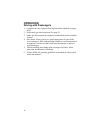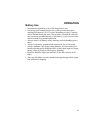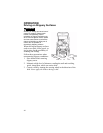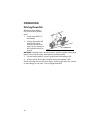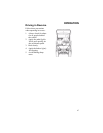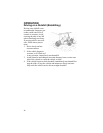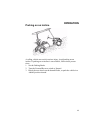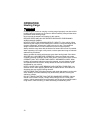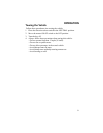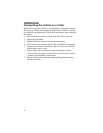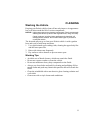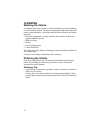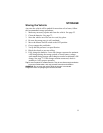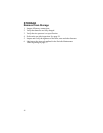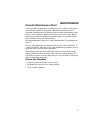
50
OPERATION
Hauling Cargo
Overloading the vehicle or carrying or towing cargo improperly can alter vehicle
handling and may cause loss of control or brake instability. Always follow these
precautions when hauling cargo:
Never exceed the stated load capacity for this vehicle.
REDUCE SPEED AND ALLOW GREATER DISTANCES FOR BRAKING
WHEN HAULING CARGO.
NEVER EXCEED THE MAXIMUM WEIGHT CAPACITY of the vehicle. When
determining the weight you are adding to the vehicle, include the weight of the
operator, passenger, accessories, loads in the rack or box. The combined
weight of these items must not exceed the maximum weight capacity.
Always load the cargo area with the load as far forward and as low as possible.
When operating over rough or hilly terrain, reduce speed and cargo to maintain
stable driving conditions.
Always operate the vehicle with extreme care when hauling loads. Slow down.
SECURE ALL LOADS BEFORE OPERATING. Unsecured loads can create
unstable operating conditions, which could result in loss of control of the vehicle.
OPERATE ONLY WITH STABLE AND SAFELY ARRANGED LOADS. When
handling off-centered loads that cannot be centered, securely fasten the load
and operate with extra caution. Always attach the tow load to the hitch point
designated for your vehicle.
HEAVY LOADS CAN CAUSE BRAKING AND CONTROL PROBLEMS. Use
extreme caution when applying brakes with a loaded vehicle. Avoid terrain or
situations that may require backing downhill.
USE EXTREME CAUTION when operating with loads that extend over the rack
sides. Stability and maneuverability may be adversely affected, causing the
vehicle to overturn.
DO NOT TRAVEL FASTER THAN THE RECOMMENDED SPEEDS. Vehicle
should never exceed 10 mph (16 kph) while towing a load on a level grass
surface. Vehicle speed should never exceed 5 mph (8 kph) when towing loads in
rough terrain, while cornering, or while ascending or descending a hill.
WARNING



